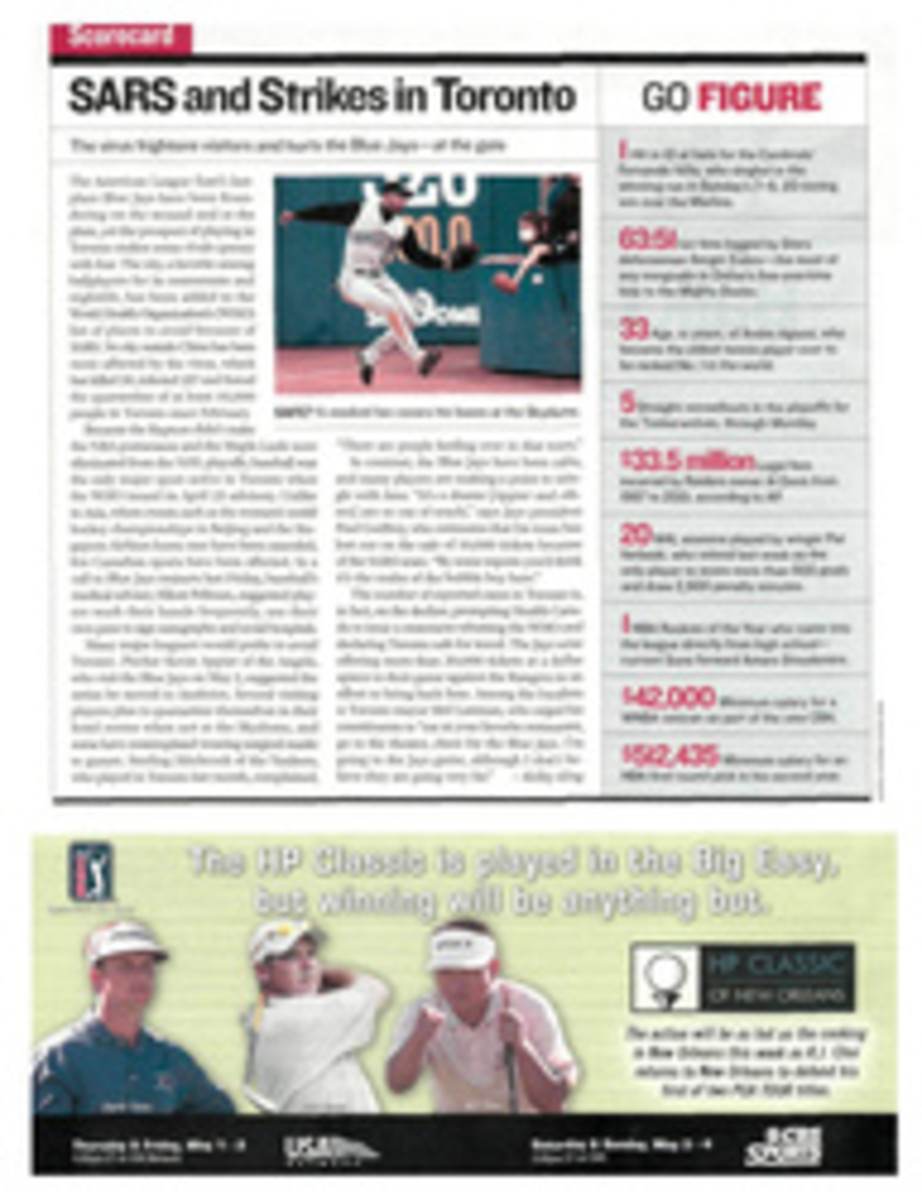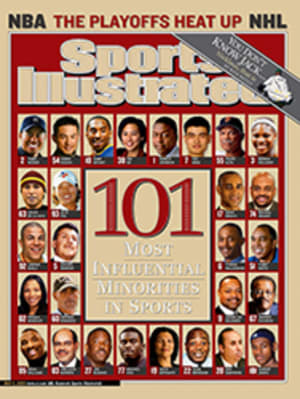
Big Play Rather than falling apart after a series of poor shots, Fred Couples kept his cool and holed a 61-foot putt to key his surprise win in Houston
Many players would have self-destructed had they been in Fred
Couples's predicament midway through the final round of the
Houston Open. At the par-4 7th hole, Couples rinsed a six-iron
shot on his way to a double bogey which dropped him back into a
tie for the lead with his playing partner, Mark Calcavecchia. On
the par-3 8th, Couples pushed a six-iron, leaving him with a
twisty, undulating 61-foot birdie putt. Meanwhile Calcavecchia
stiffed his tee shot. Couples looked like he'd fall at least a
stroke behind, and maybe more, as a three-putt was a real
possibility. Couples, though, has always had the ability to
remain serene in the face of adversity, so instead of rushing his
long putt, he walked around the green and methodically studied
the break and the speed, and then slowly went through his preshot
routine. When the putt rolled in for a shocking deuce, Couples
tossed his putter across the green and pantomimed doing the same
with his visor (above). Although Calcavecchia made his two-footer
to keep pace, he was clearly rattled, and he hit several wayward
shots over the ensuing holes to stumble home with an even-par 37
on the back. Energized by his bomb, Couples birdied the 9th hole
to take the lead, and he held on down the stretch, thanks to more
superlative work on the greens.
TWO COLOR PHOTOS: COURTESY OF CBS (COUPLES)
COLOR PHOTO: ANDREW GOMBERT (MCCULLAGH) Gerald McCullagh, 52, teaches at Rush Creek Golf Club in Maple Grove, Minn., and is one of Golf Magazine's Top 100 Teachers.
FOUR COLOR PHOTOS: ANDREW GOMBERT (MCCULLAGH)/JIM GUND(BACKGROUND)
THE TIP
SPEED LIMIT
Judging speed is the most important part of long putting, and
contrary to popular opinion, it is a skill that can be learned.
The best way to develop a feel for speed is a four-step drill
during which you putt with your eyes closed, a technique that
helps develop an understanding of the delicate body motions
required to play putts of varying distances.
Stand behind the ball and look down the path of the putt to gauge
the line and distance.
Close your eyes and take a couple of practice strokes to get a
feel for the speed.
Open your eyes and address the ball, then take one last look at
the hole and the line.
Close your eyes and stroke the ball. Repeat the exercise from
varying distances.
OUR TOP TEACHER SAYS...
"Hank Kuehne's brilliant run in Houston was no fluke. The
1998 U.S. Amateur champ has honed his game in Canada and Europe,
and his years of battling adversity--like me, Hank is a
recovering alcoholic--have steeled him to emerge as a
long-hitting winner to whom the fans will flock."
"The birdiefest at Redstone proves that length alone is not
enough to stop Tour players from shooting lights out; you also
need thick rough and narrow fairways."
"Martha Burk's rallying cry has caused a stir in my native
Ireland, where women's rights groups are threatening to picket
all-male clubs, including Portmarnock and Royal County Down."
"Slow play among amateurs could be drastically reduced if
golfers would quit marking their balls and simply keep putting
until they hole out."

